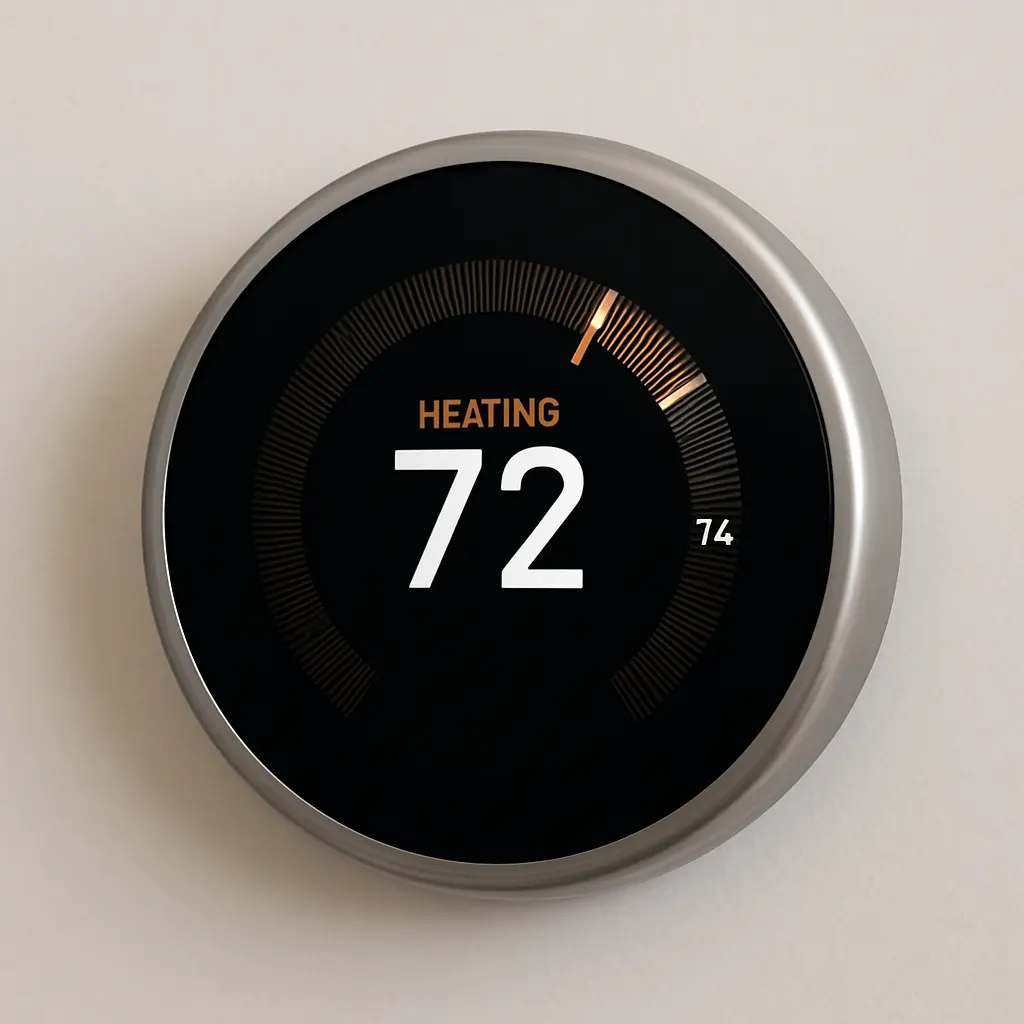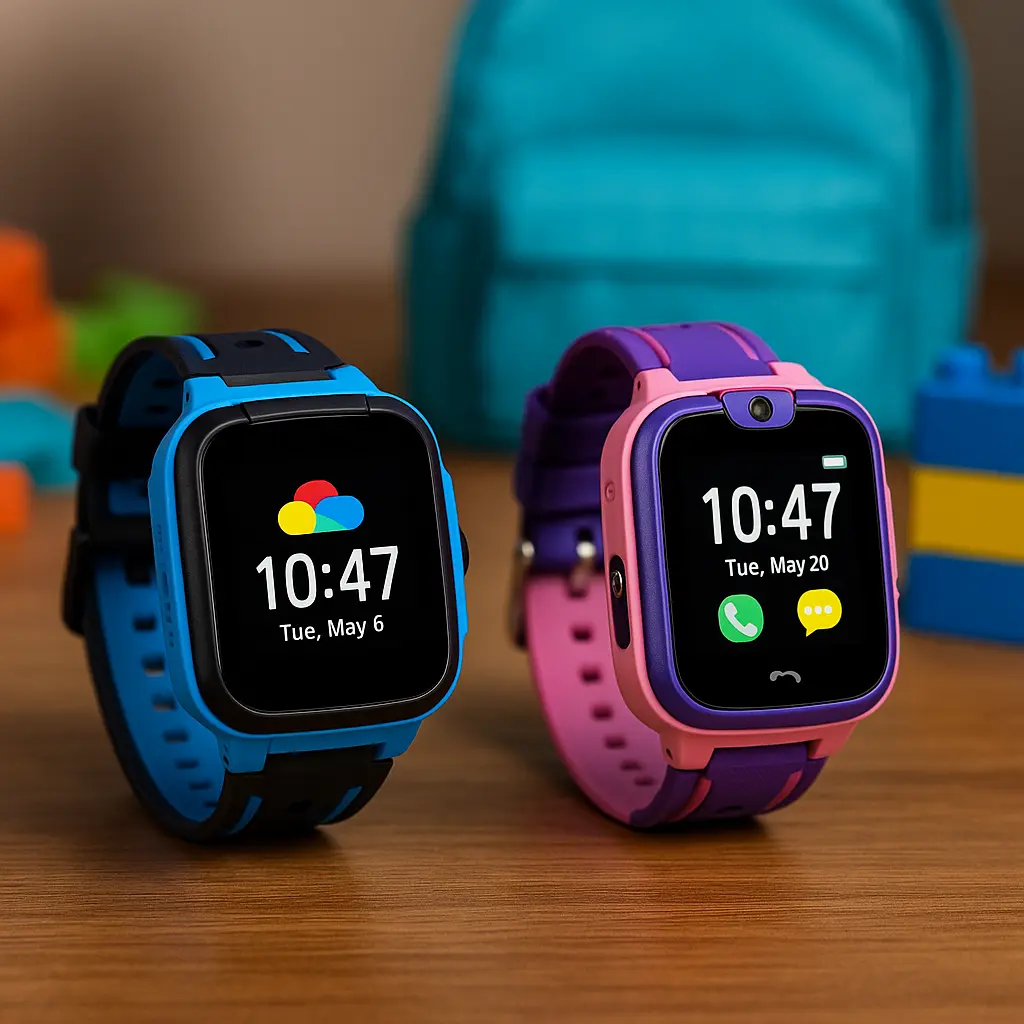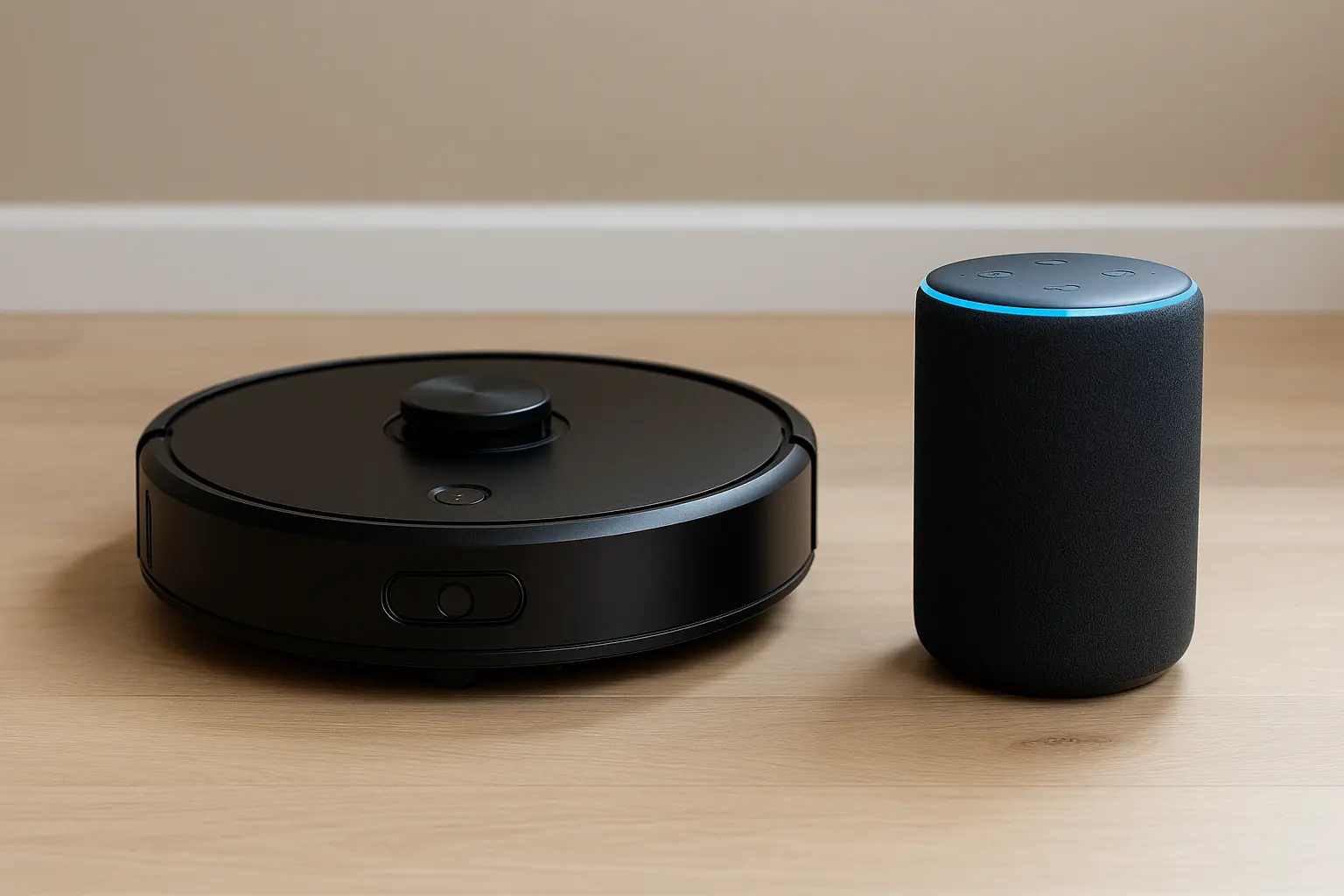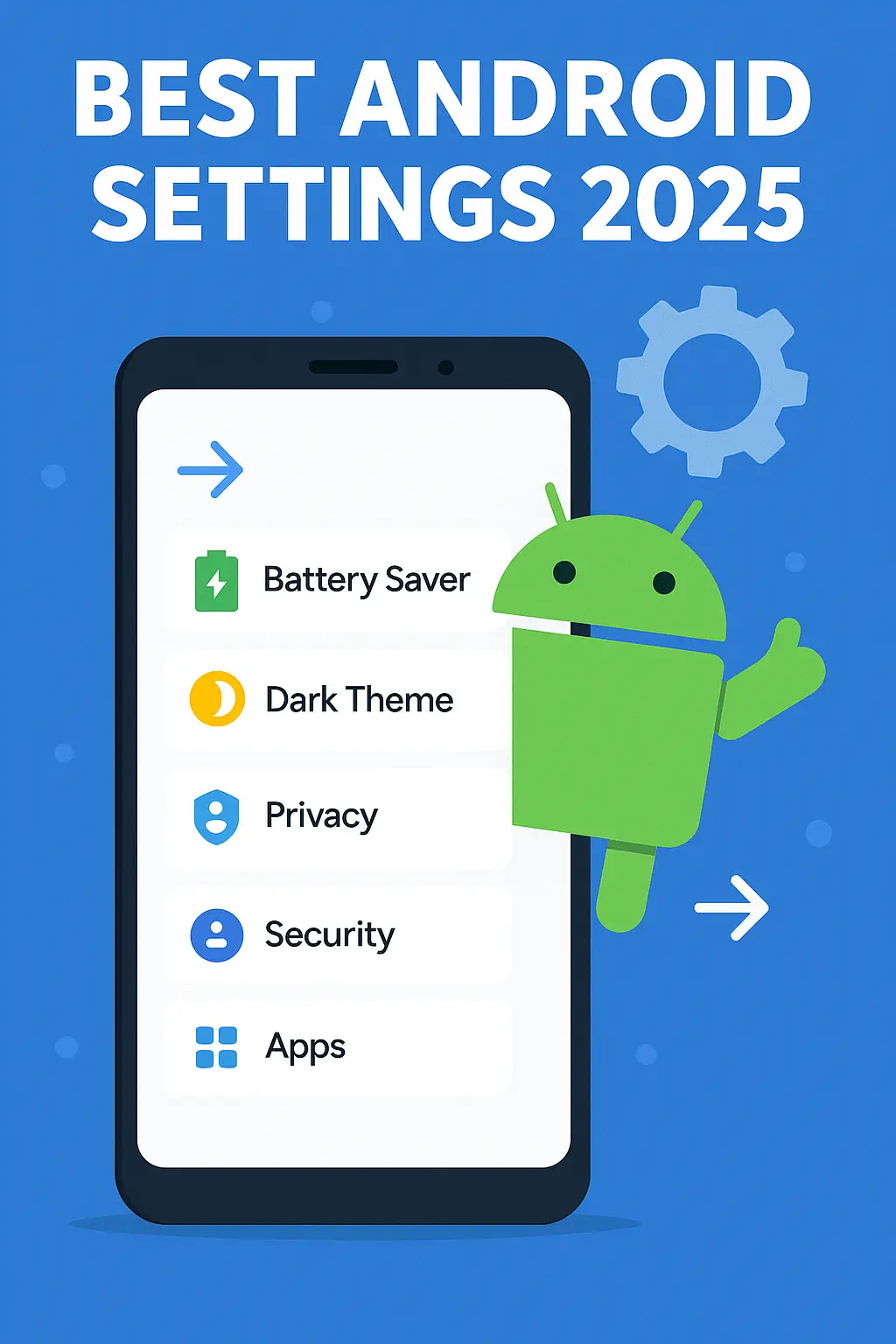Best Android Settings to Change in 2025 – Optimize Your Phone from Day One
Contents
- 1 📱 Introduction
- 2 🔋 1. Enable Battery Saver & Adaptive Battery
- 3 📡 2. Turn Off Unused Wireless Features (Bluetooth, NFC, Hotspot)
- 4 🔕 3. Manage Notifications Smartly
- 5 🔒 4. Turn On Find My Device
- 6 👁️ 5. Review App Permissions (Especially for Camera, Location & Mic)
- 7 📲 6. Enable Dark Mode System-Wide
- 8 🌐 7. Switch to a More Private DNS
- 9 📸 8. Turn Off Backup to Google Photos (If Not Needed)
- 10 🧹 9. Disable Bloatware & Auto-Start Apps
- 11 🔗 Related Tips You Might Find Useful
- 12 ❓ FAQ
📱 Introduction
Got a new Android phone? Awesome — but before you dive into installing your favorite apps or snapping photos, let’s make sure your phone is truly ready.
Most people never touch their settings after unboxing. That’s a mistake.
Whether you just transferred your data from your old device or are setting up a phone from scratch, these must-change Android settings in 2025 will help you save battery, improve privacy, reduce distractions, and enhance performance — right from day one.
Let’s get into it.
🔋 1. Enable Battery Saver & Adaptive Battery
Android 13/14 comes with powerful tools to help your phone last longer.
How to Enable:
Settings > Battery > Battery Saver
Turn on Battery Saver and Adaptive Battery
✅ Extends battery life by limiting background activity from unused apps
📡 2. Turn Off Unused Wireless Features (Bluetooth, NFC, Hotspot)
Leaving these on all the time drains your battery and could expose your phone to security risks.
Do This:
Swipe down Quick Settings
Turn off Bluetooth, NFC, and Mobile Hotspot when not in use
🔕 3. Manage Notifications Smartly
Don’t let every app buzz your phone. You can reduce distractions and save battery too.
How to:
Settings > Notifications > App Settings
Only allow notifications from essential apps (messaging, calendar, etc.)
🔒 4. Turn On Find My Device
If your phone is lost or stolen, you’ll be glad you did.
Enable via:
Settings > Security > Find My Device
Make sure it’s turned on and linked to your Google account
👁️ 5. Review App Permissions (Especially for Camera, Location & Mic)
Some apps request more access than they really need.
What to Do:
Settings > Privacy > Permission Manager
Revoke location or microphone access from apps you don’t trust
📲 6. Enable Dark Mode System-Wide
It’s easier on your eyes — and saves battery on OLED screens.
How to Enable:
Settings > Display > Dark Theme
Set it to always on or schedule it
🌐 7. Switch to a More Private DNS
To boost privacy, use a secure DNS like Cloudflare (1.1.1.1).
Enable via:
Settings > Network & Internet > Private DNS
Choose “Private DNS provider hostname” → enter:
1dot1dot1dot1.cloudflare-dns.com
📸 8. Turn Off Backup to Google Photos (If Not Needed)
By default, Google Photos might auto-backup everything — and quickly eat up your storage quota.
Check:
Open Google Photos > Profile Icon > Photos Settings > Backup
Adjust what gets backed up or disable if unnecessary
🧹 9. Disable Bloatware & Auto-Start Apps
Some phones come with apps you’ll never use. They still run in the background.
How to:
Settings > Apps > [Select App] > Disable
Or use battery settings to stop auto-start
🔗 Related Tips You Might Find Useful
👉 Just upgraded? Learn how to copy all your data from Android to Android in 2025
👉 Battery not lasting long? Check our top power banks for Outdoor in 2025
❓ FAQ
Q: Should I enable all battery-saving settings by default?
A: Not all, but features like Adaptive Battery and turning off unused wireless features can greatly improve battery life without harming performance.
Q: Is it safe to disable pre-installed apps?
A: Yes, as long as it’s not a core system app. Most bloatware can be safely disabled from app settings.
Q: What’s the best Android version for these settings?
A: These tips are optimized for Android 13 and 14, but most work on Android 11+ as well.
![Stream Without Limits – Best Wi-Fi 7 Routers for Buffer-Free Entertainment [2025] 1 Four modern Wi-Fi 7 routers displayed on a dark surface with a clean blue background, highlighting their sleek design and advanced antenna configurations.](https://www.techgadgetradar.com/wp-content/uploads/2025/06/best-wifi7-routers-streaming-2025-feature-image.webp)
![Fast, Cheap & Future-Proof – Best 5G Phones Under $400 [2025 Picks] 2 Four modern 5G smartphones under $400 in 2025 displayed on wooden table with vibrant screens](https://www.techgadgetradar.com/wp-content/uploads/2025/06/best-5g-phones-under-400-2025-feature.webp)



![Type Like a Pro – Best Mechanical Keyboards for Your Mac Setup [2025] 6 MacBook connected to a compact mechanical keyboard on a wooden desk](https://www.techgadgetradar.com/wp-content/uploads/2025/06/best-mechanical-keyboard-mac-setup-2025-feature.webp)
